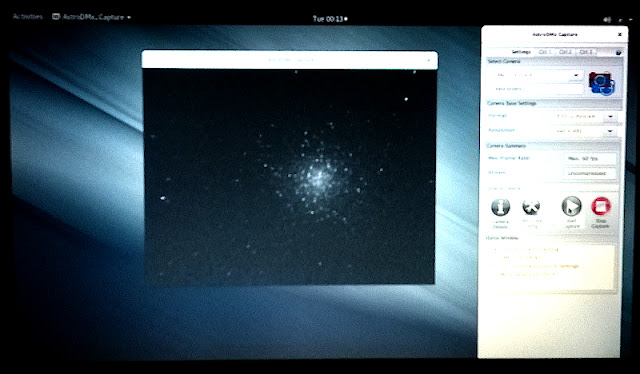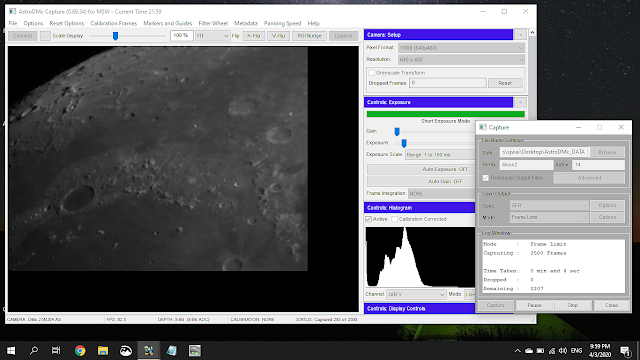The first implementation of AstroDMx Capture for Linux had a different UI that quickly evolved into the present UI.
The original AstroDMx Capture UI showing M13 data being captured with a DMK
back in 2016
Since those days, Nicola has implemented a number of cameras other than The Imaging Source cameras, such as QHY, ZWO, Atik, SV305, Canon and Nikon DSLRs and others. She has also implemented AstroDMx Capture for the Raspberry Pi, macOS as well as Linux, all with a unified code-base. She intends to release the macOS version, which has been functional for about a year, at about the same time that AstroDMx Capture for Windows is released. Nicola is also looking at releasing a 32-bit version for Linux.
The imaging setup for imaging with a DMK and AstroDMx Capture for Windows
A Skymax 127 Maksutov was mounted on a Celestron AVX EQ, GOTO mount. A DMK 21AU04.AS camera was placed at the Cassegrain focus and AstroDMx Capture for Windows was used to capture 2,500-frame SER files of different regions of the Moon.
The best 75% of the frames in the SER files were stacked in Autostakkert!2, wavelet processed in Registax 6 and post processed in the Gimp 2.10.
AstroDMx Capture for Windows capturing data on the Clavius region of the
75.6% waxing Moon
The Clavius region
AstroDMx Capture for Windows capturing a 2,500-frame SER file of the
Plato region of the Moon
The Plato region
Plato and Sinus Iridum region
Two pane mosaic of the Plato region
The Tycho region
AstroDMx Capture for Windows is stable and not too far away from completion








